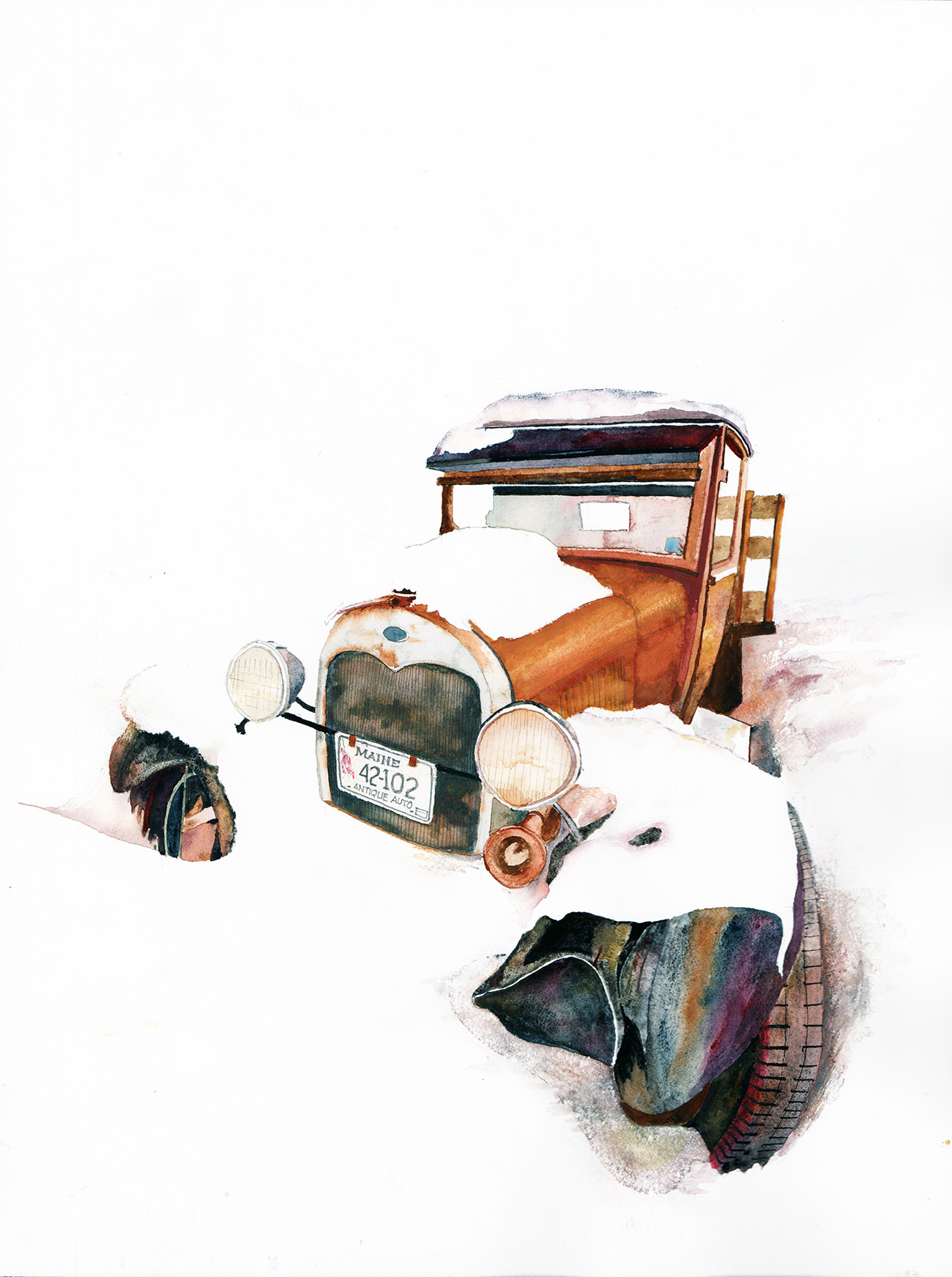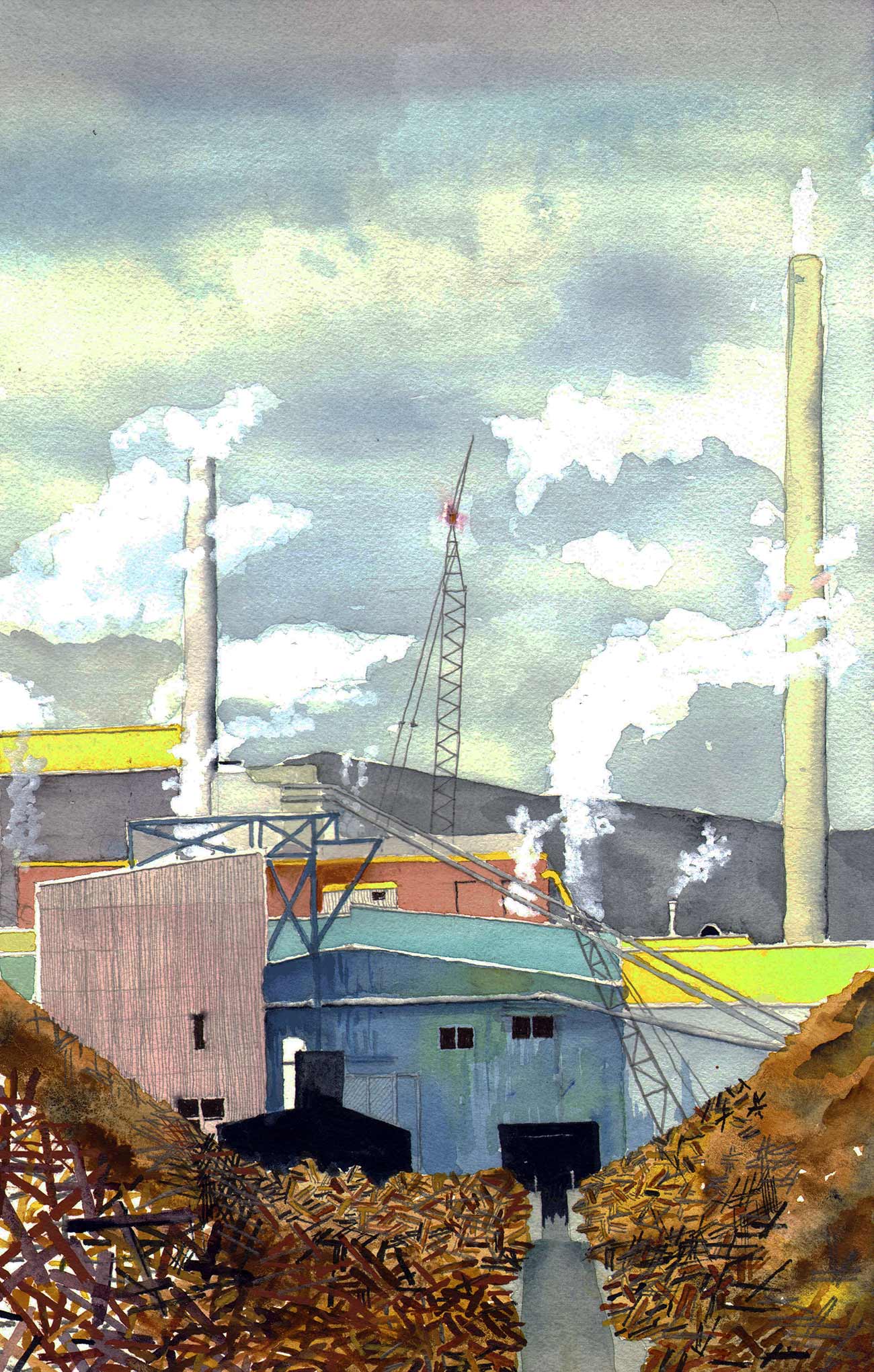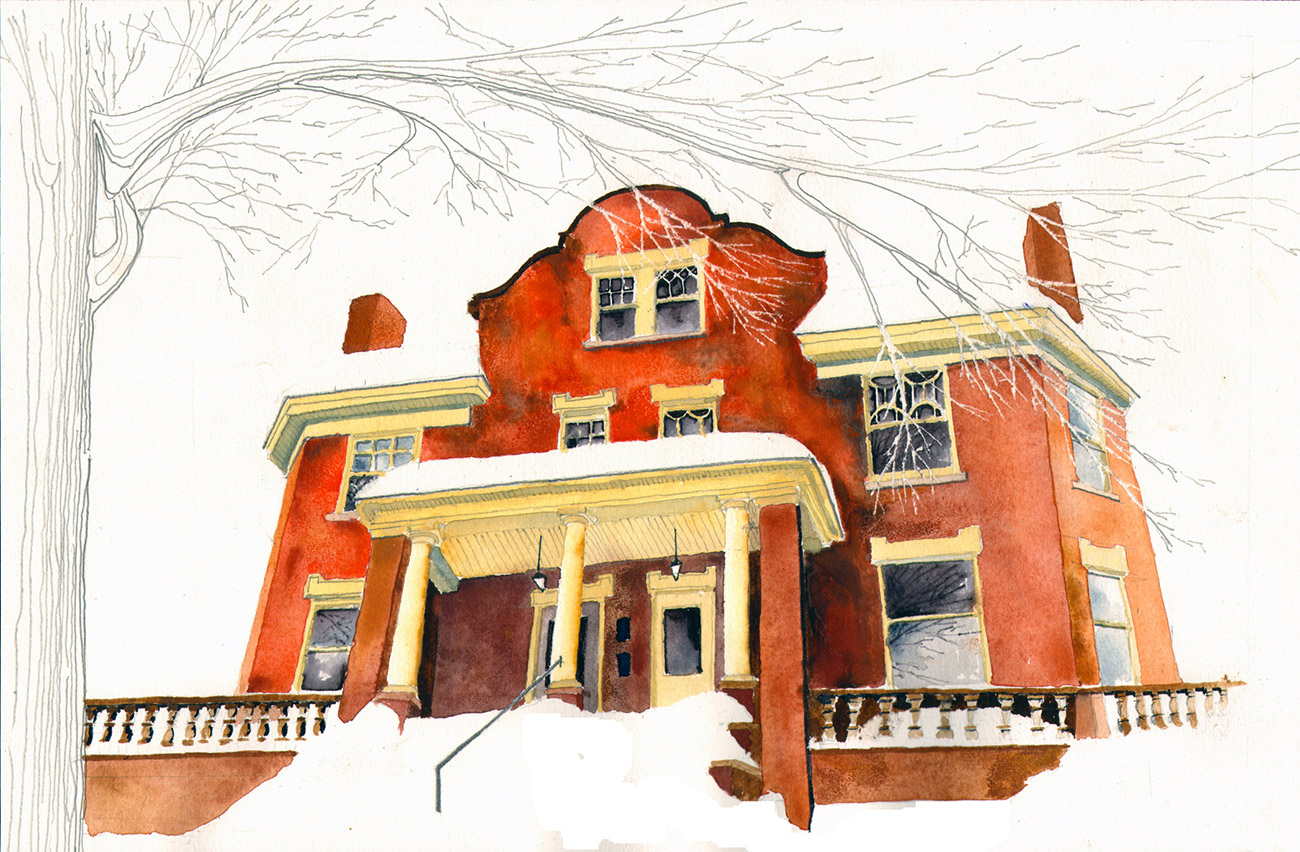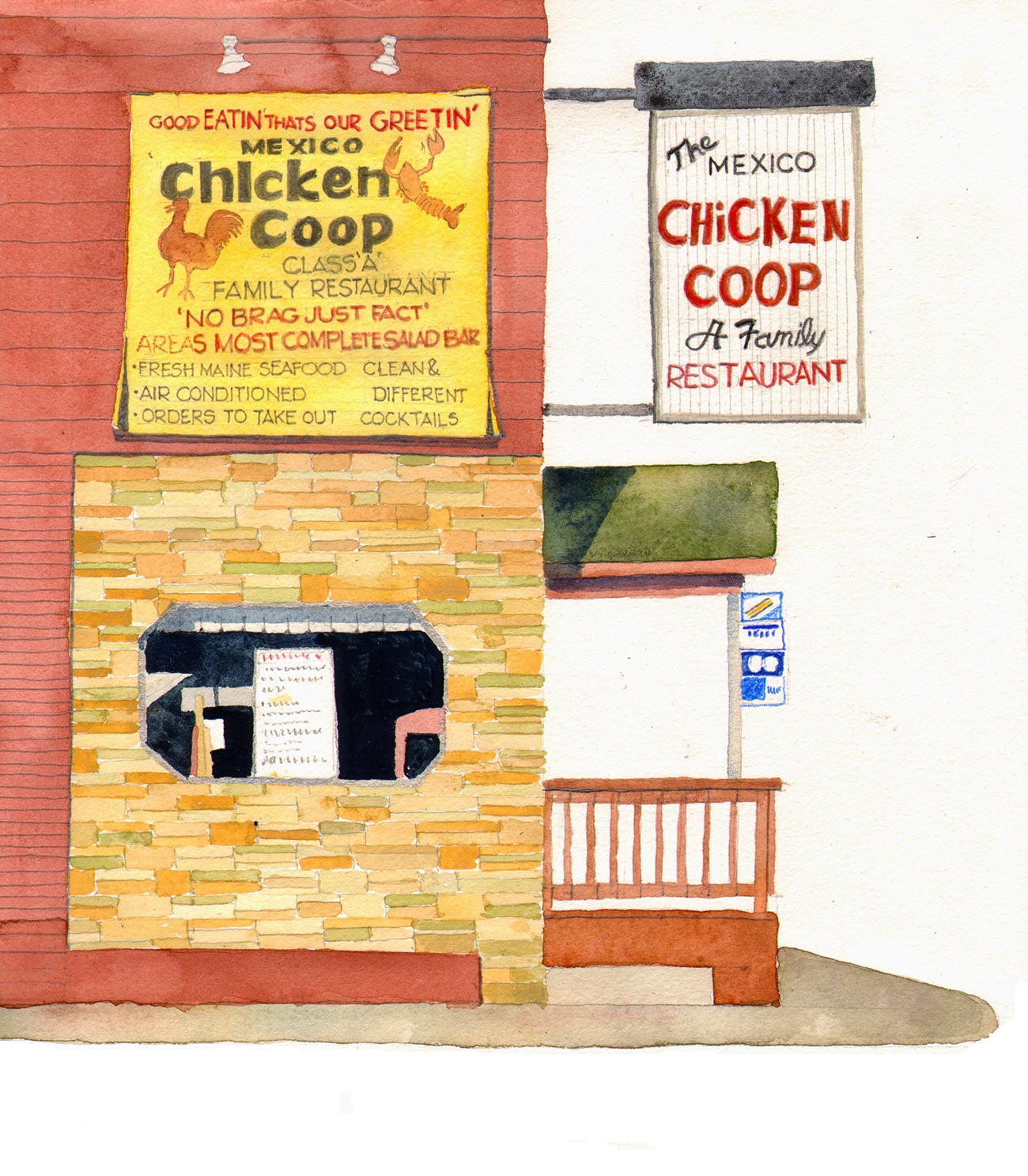In this two-part feature on Work & Economy, report editor Aaron Cayer and artist Tom Leytham describe the history of industrial mill work and its consequences on the landscape, the community, and the politics of the town.
In his watercolor series The River Valley’s Other Working Landscape, Tom Leytham documents the often-forgotten and hidden ruins of working-class industrial communities by challenging their once sublime qualities. As he describes in his artist statement, through ground-view perspectives, Leytham animates the abandoned and fragmented industrial constructions, the labor embedded in their surfaces, and the histories that they represent. His attentions to color and light define textures rather than mass, and his use of negative spaces, partial views, and rich detail provoke one to imagine how they were once occupied. —Maine’s River Valley report editors
Read part I of the Work & Economy feature here.
Artist Statement
This series of watercolors explores the remnants of the nineteenth- and twentieth-century industrial landscape of the River Valley, including ruined, repurposed, and abandoned buildings and structures designed to support work and the economy. Some were monumental, others were modest, and many now hide in plain sight. The process of documenting components of what I call “the other working landscape”—in contrast to my previously completed studies of Vermont farms and forests, places sometimes referred to as the “working landscape”—has afforded me the opportunity to study and appreciate the resourcefulness of their designs and constructions, the labor that was embedded in their materiality and textures, and the histories that they represent.
These watercolors are a product of a good stare: The eye produces a hierarchy of image that begins to tell a story about the past and the present. The hand then follows the eye from a ground or “human” view, repeating the visual journey through the site. In one sense, these are structures of entropic beauty—changing from a state of order to disorder and sometimes back—while on the other hand they are representations of labor, exploitation, loss, and resilience. The focus of these pieces is on the object and its meaning; enough context is included to place the piece, but the parts left out create a puzzle to be sorted by the viewer.
In studying a region such as the River Valley, where attention to paper texture and finish have provided livelihoods for more than a century, the focus on surface, color, and light is paramount. The colors mix while they are wet, and they produce a sense of movement through color and light that mimics the movement of the eye. The result is a use of color that defines the subject and the sparing use of line that defines texture rather than mass. Just as these images in their incompleteness invite visual exploration, through the use of partial views, negative space, dramatic perspectives, and rich detail, these pieces create environments that engage a viewer’s imagination about how they once were occupied.1John Stilgoe’s call to explore the past through ordinary things serves as a useful reference. See his Outside Lies Magic: Regaining History and Awareness in Everyday Places (London: Walker Books, 1998).
The use of negative space, the white of the paper, sets the compositions in motion, and many have a pivot point that moves the eye through the subject. Dramatic, low points of view hint at the monumentality of the objects that are hiding in plain sight (site). Once the center of the community, these aging and disappearing buildings and installations have come to symbolize the decline of an industrial economy, resource depletion, and environmental degradation. Yet they are also important cultural artifacts that demonstrate enterprise, bold engineering, and often craftsmanship. In the words of poet William Butler Yeats, “Things reveal themselves passing away.”

An abandoned mill race: The stream produced the mill, and it continues long after the mill is gone. Credit: Tom Leytham.

The former J. A. Thurston Company mill at Hale: The northern forest reclaims industrial ruins. Credit: Tom Leytham.

A snow-buried Maine truck: Nature begins to overpower the remnants of the industrial landscape. Credit: Tom Leytham.

The Nine Dragons Paper Mill: The massive pile of freshly cut logs in the foreground frames the mill, while the menacing clouds of vapor and toxins rise in the background. Credit: Tom Leytham.

Clachon Place, Strathglass Park: Hugh J. Chisholm, founder of Oxford Paper, commissioned the prominent architect Cass Gilbert to design a planned housing community for the mill’s workers within a park setting. Credit: Tom Leytham.

The former Chicken Coop Family Restaurant: The sign and the hometown restaurant summarize the community's values and stand as a work of folk art. Credit: Tom Leytham.
Biographies
is a Vermont-based artist and architect. In his recent exhibitions and publications, he uses watercolor in order to document remnants of historic industrial landscapes in Vermont, Maine, and beyond. Just as architectural ruins in their incompleteness invite visual exploration, his works seek to engage viewers’ imaginations. His first one-man show in 1984 was Life Goes On, and he waited until 2015 for his next, The Other Working Landscape. His work is housed in private collections and in the collection of the Vermont Statehouse, and has been featured online, on television, in the Vermont Governor’s Office, and in the Vermont Legislative Committee Rooms. He has taught architecture at Norwich University, where he also founded the School of Architecture + Art’s sketching school. His recent shows include The Legacy of the Erie Canal and Hiding in Plain Sight.
The views expressed here are those of the authors only and do not reflect the position of The Architectural League of New York.

